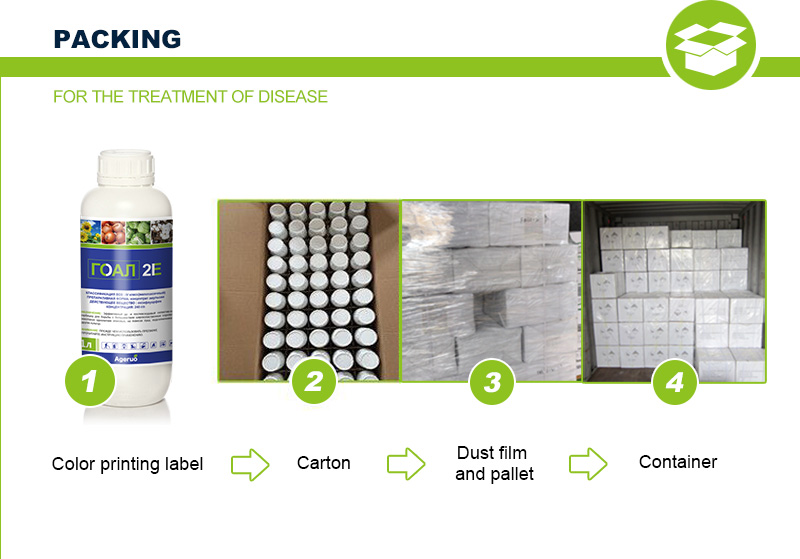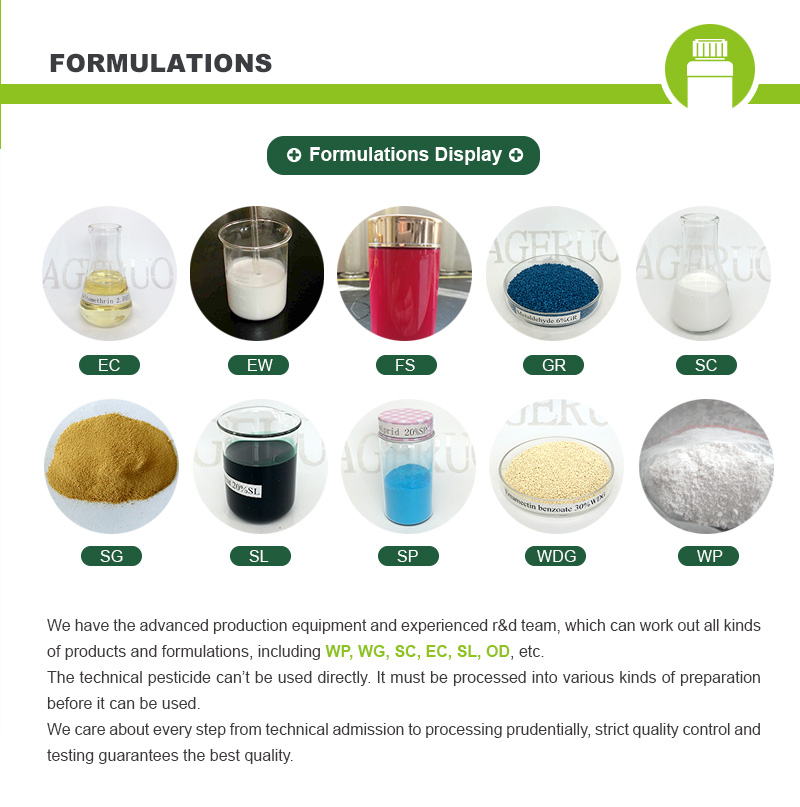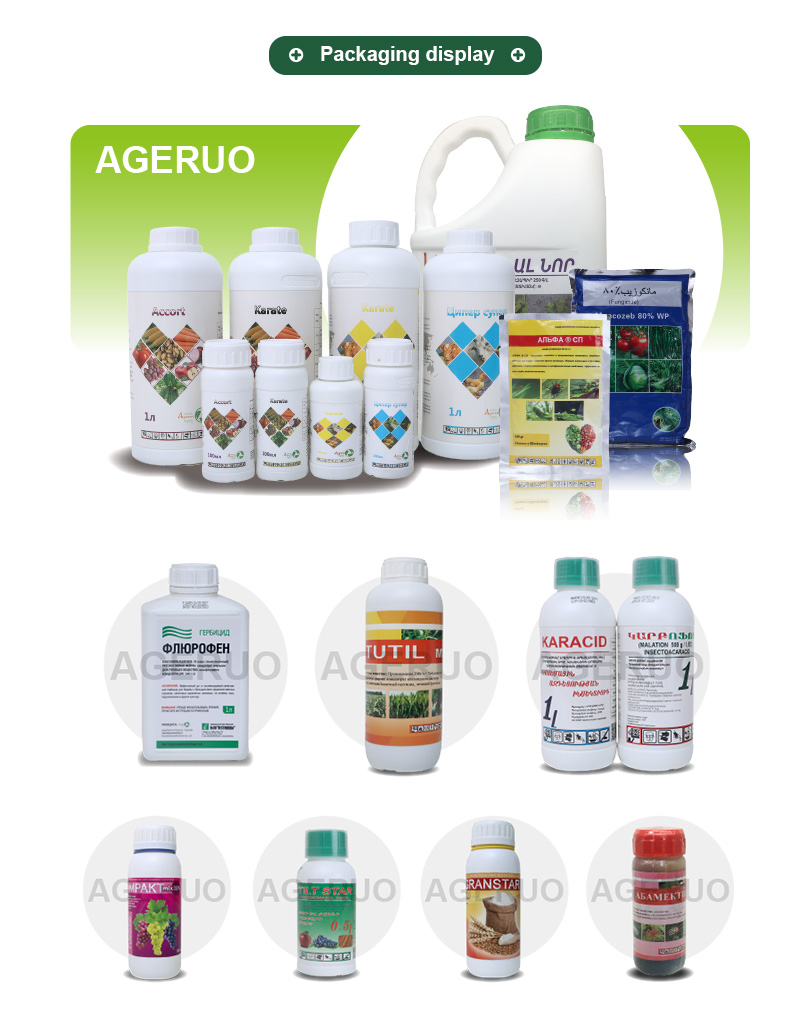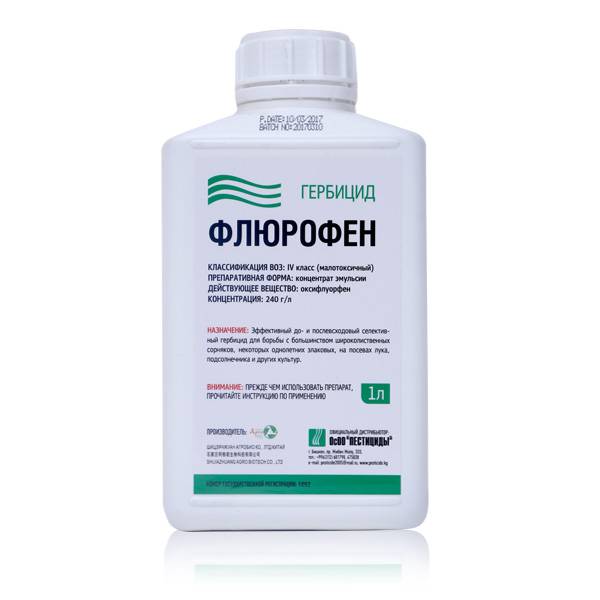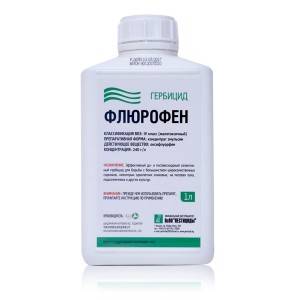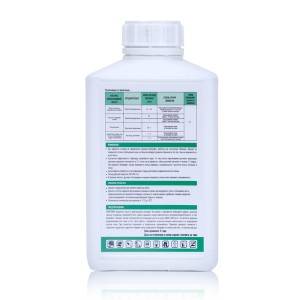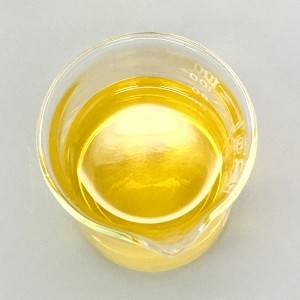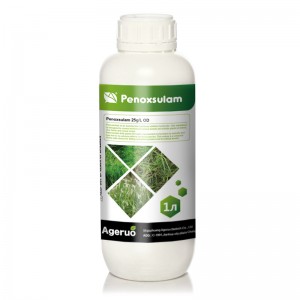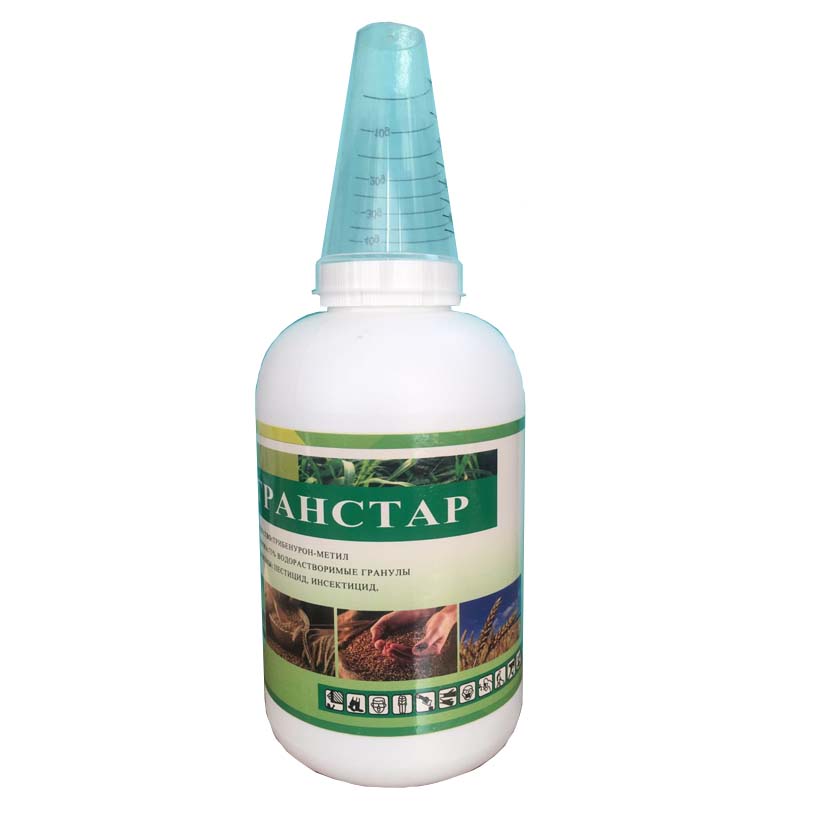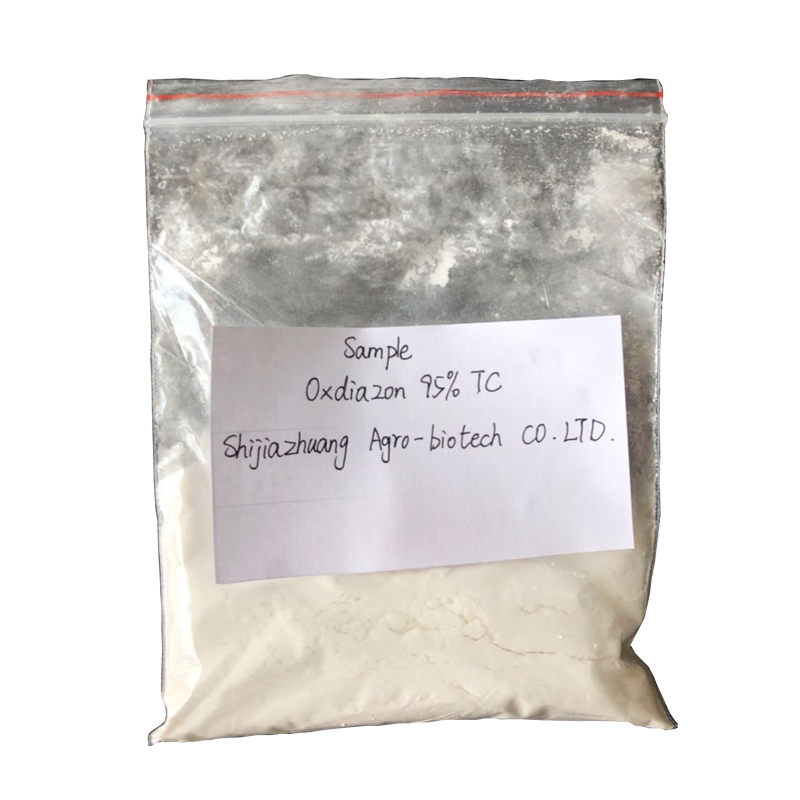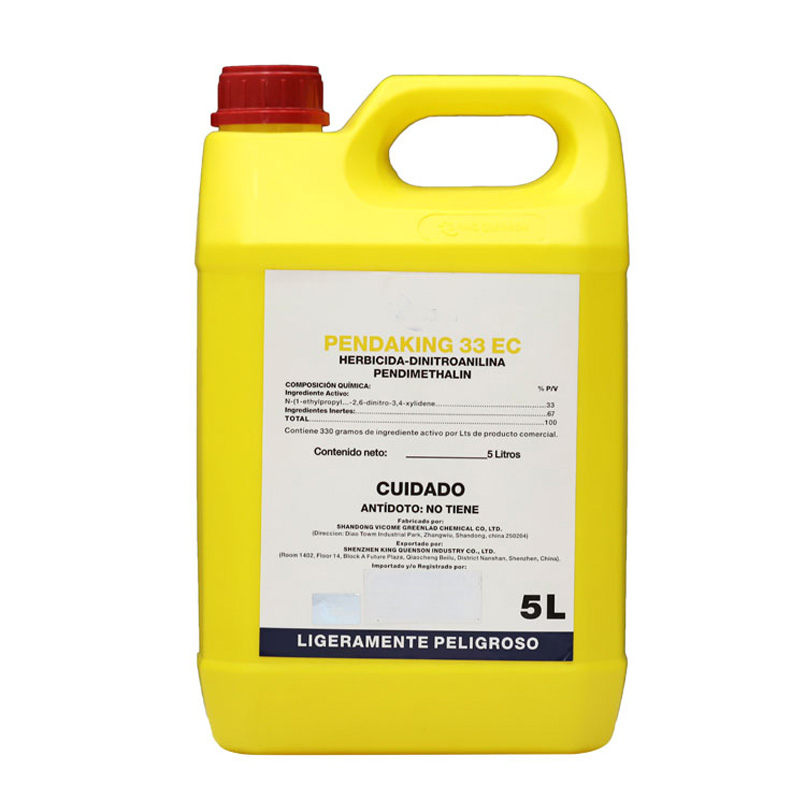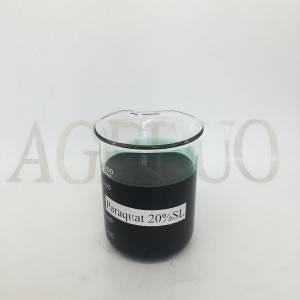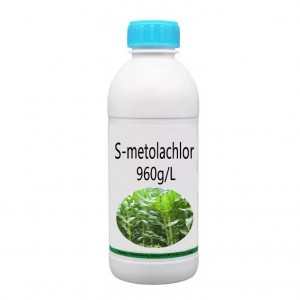Oxyfluorfen 23.5% EC Herbicide | Ageruo Weed Control

Oxyfluorfen 23.5% EC Herbicide
Oxyfluorfen heribicide is a low toxicity, contact herbicide. The best application effect was at the early stage before and after bud. It has a wide spectrum of weed killing for seed germination. It can inhibit perennial weeds. Oxyfluorfen is a contact herbicide widely used for its effective weed control properties in agricultural settings.Oxyfluorfen belongs to the chemical class of diphenyl ethers and acts by inhibiting protoporphyrinogen oxidase, an enzyme that is essential for chlorophyll synthesis in plants. This action leads to the rupture of cell membranes and ultimately to plant death.
| Product Name | Oxyfluorfen 23.5% EC |
| CAS Number | 42874-03-3 |
| Molecular Formula | C15H11ClF3NO4 |
| Type | Herbicide |
| Brand Name | Ageruo |
| Place of Origin | Hebei,China |
| Shelf life | 2 Years |
| The mixed formulatiion products | Oxyfluorfen 9% + Pretilachlor 32% + Oxadiazon 11% ECOxyfluorfen 12% + Anilofos 16% + Oxadiazon 9% EC
Oxyfluorfen 5% + Pendimethalin 15% + Metolachlor 35% EC Oxyfluorfen 14% + Pendimethalin 20% EC Oxyfluorfen 22% + Diflufenican 11% SC |
Feature
It can kill many kinds of weeds. Oxyfluorfen 23.5% EC can be mixed with many other pesticides. They are used in various ways. It can be made of toxic soil evenly, and can also be spread with granules and spray.
Advantages of oxyfluorfen
Highly effective: has a significant effect on a wide range of weeds.
Persistent: a single application provides continuous weed control for several months.
Selective: safe for target crops.
Formulations of Oxyfluorfen
Oxyfluorfen 23.5% EC
This formulation is one of the most commonly used due to its high concentration and effectiveness. The 23.5% EC (Emulsifiable Concentrate) allows for easy mixing with water and other herbicides, providing flexibility in various agricultural applications.
Mixed Formulation Products
Oxyfluorfen 9% + Pretilachlor 32% + Oxadiazon 11% EC
This combination offers a broad spectrum of weed control, leveraging the complementary modes of action of each component. It is particularly effective in paddy fields and other aquatic environments.
Oxyfluorfen 12% + Anilofos 16% + Oxadiazon 9% EC
This mixture enhances the herbicidal efficacy by combining the strengths of each active ingredient, making it suitable for a wide range of crops and weed species.
Oxyfluorfen 5% + Pendimethalin 15% + Metolachlor 35% EC
Targeting a diverse array of weeds, this formulation is beneficial for pre-emergent applications in various crops, providing extended control throughout the growing season.
Oxyfluorfen 14% + Pendimethalin 20% EC
With a higher concentration of active ingredients, this formulation is designed for tougher weed problems, ensuring effective control with a single application.
Oxyfluorfen 22% + Diflufenican 11% SC
This combination is particularly effective against broadleaf weeds and grasses, making it ideal for use in cereals and other row crops.
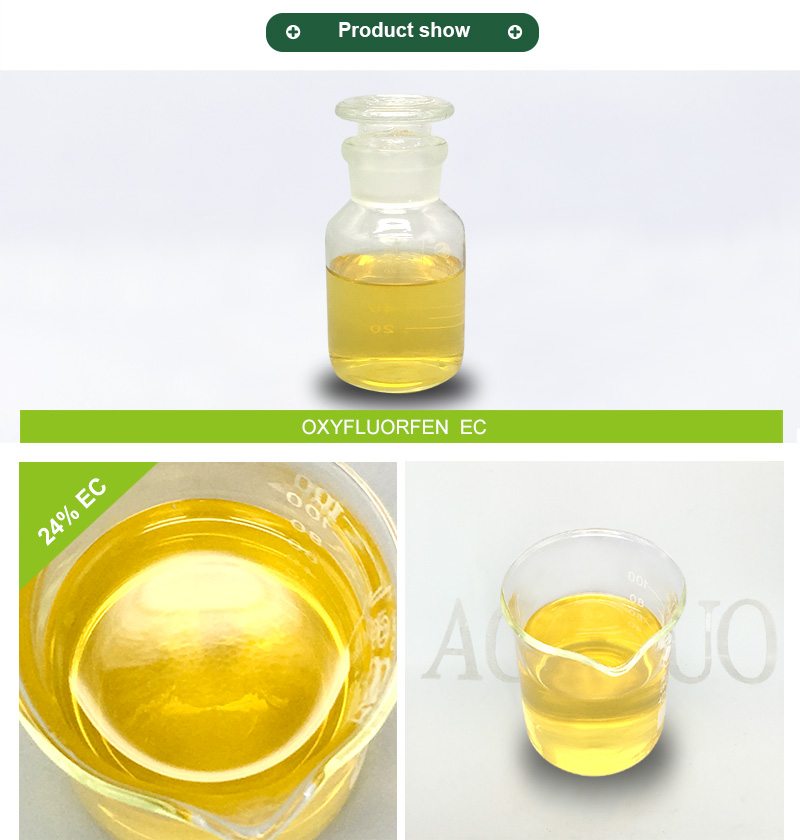
Mode of action
Oxyfluorfen is a contact herbicide, which means it must be in direct contact with the target plant to be effective. Once applied, it inhibits the enzyme protoporphyrinogen oxidase, which is necessary for chlorophyll production. This inhibition leads to the accumulation of toxic intermediates, which can lead to cell membrane rupture and plant death.
Entry into the plant and uptake
The primary route of entry of Oxyfluorfen into the plant is through the germinal sheath and hypocotyl region. These parts of the plant are critical during germination and early growth stages. Although roots can absorb Oxyfluorfen, this occurs to a much lesser extent. There is very little translocation of the herbicide within the plant and it stays mainly where it is absorbed.
Light-dependent herbicidal activity
The herbicidal activity of Oxyfluorfen is significantly enhanced in the presence of light. The reactive oxygen species produced in the presence of light exacerbates cell membrane disruption, resulting in rapid and effective weed control. This light-dependent mechanism ensures that Oxyfluorfen is most effective when applied to actively growing weeds during the day.
Soil Interactions and Degradation
In soil, Oxyfluorfen is known for its low water solubility and limited mobility. After application, it quickly adsorbs to the top 0-3 cm of soil, where it remains effective against germinating weed seeds. Microbial degradation is the main route of decomposition in the soil with a half-life of about 30 days. This ensures that Oxyfluorfen does not remain in the environment for long periods of time, thus reducing the risk of contamination.
Application
Oxyfluorfen 23.5% EC can control monocotyledon and broadleaf weeds in transplanted rice, soybean, corn, cotton, peanut, sugarcane, vineyard, orchard, vegetable field and forest nursery. Including barnyardgrass, Sesbania, dry Bromus, Setaria, Datura, ragweed and so on.
Paddy Fields
Timing and Dosage
For effective weed control in paddy fields, Oxyfluorfen should be applied 4-6 days after transplanting rice seedlings. The ideal application time is when the grass weeds are at the seedling to 1.5-leaf stage. The recommended dosage is 10-20 mL of Oxyfluorfen 24% EC per acre, diluted with 300-500 mL of water.
Mixing and Application Technique
To ensure uniform application, the diluted herbicide should be mixed with 15-20 kg of sand and evenly distributed across the paddy field. Alternatively, the mixture can be placed in a bottle with small holes and evenly dispersed across the field while walking.
Combination Treatments
Combining Oxyfluorfen with other herbicides can enhance its effectiveness. For example, mixing 6 mL of 24% Oxyfluorfen with 6 g of 10% Bispyribac-sodium or 60 mL of 12% Oxadiargyl can provide comprehensive control of grass weeds before the 1.5-leaf stage.
Winter Wheat Fields
Pre-Sowing Application Oxyfluorfen should be applied 9 days before sowing winter wheat, following the harvest of the previous rice crop. The recommended dosage is 12 mL of Oxyfluorfen 24% EC per acre.
Dosage and Timing Ensuring the correct dosage and timing is crucial for preventing weed competition in winter wheat fields. Applying the herbicide before sowing allows for effective pre-emergent control.
Cotton Fields
Seedbed Treatment
For cotton fields, Oxyfluorfen can be applied to the seedbed after sowing. The recommended dosage is 12-18 mL of Oxyfluorfen 24% EC per acre, often combined with 60 mL of 60% Butachlor.
Film-Mulched Cotton Fields
In film-mulched cotton fields, apply 18-24 mL of 24% EC after sowing and before covering with the film.
Direct-Seeded and Transplanted Cotton Fields
For direct-seeded cotton, apply 36-48 mL of Oxyfluorfen 24% EC before emergence. For transplanted cotton, apply 40-90 mL of Oxyfluorfen 24% EC before transplanting.
Garlic Fields
Pre-Emergence and Post-Emergence Applications
Oxyfluorfen can be applied after sowing until the needle stage or after the garlic has 2 leaves and 1 heart. The dosage varies from 48-72 mL of Oxyfluorfen 24% EC per acre, with higher amounts used for clay and loamy soils.
Dosage Variations by Soil Type
For sandy soils, use the lower end of the dosage range, while higher doses are recommended for loamy and clay soils.
Onion Fields
Direct-Seeded Onion
For direct-seeded onions, apply 40-50 mL of Oxyfluorfen 24% EC at the 2-3 leaf stage.
Transplanted Onion
For transplanted onions, apply 70-100 mL of Oxyfluorfen 24% EC 6-10 days after transplanting, once the onions have reached the 3-leaf stage.
Peanut Fields
Pre-Emergence Application
Apply 40-50 mL of Oxyfluorfen 24% EC per acre before the emergence of peanut seedlings to ensure effective weed control.
Conifer Nurseries
Immediate Post-Sowing Application
For conifer nurseries, apply 50 mL of Oxyfluorfen 24% EC immediately after sowing to ensure safety and effectiveness.
Tea Gardens, Orchards, and Young Forest Management
Timing and Dosage
Apply 30-50 mL of Oxyfluorfen 24% EC when weeds are at the 4-5 leaf stage to maintain weed-free conditions in tea gardens, orchards, and young forests.
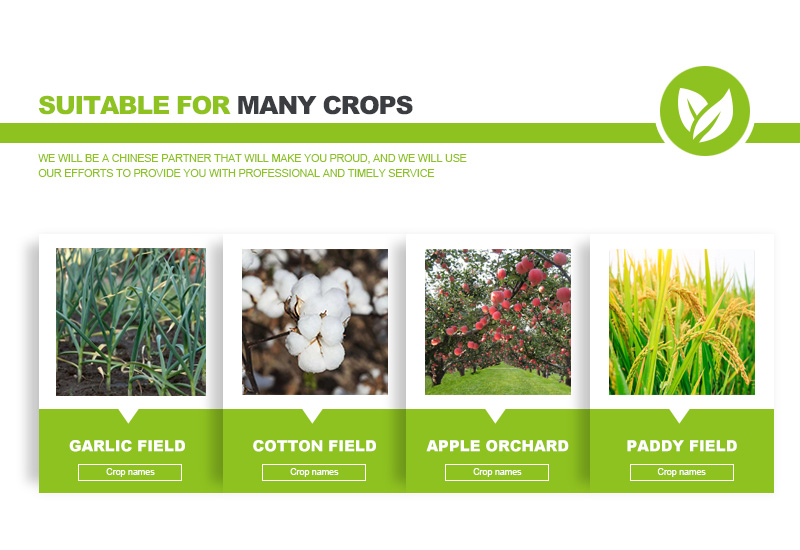
Target Weeds
Broadleaf Weeds
Oxyfluorfen is highly effective against a wide range of broadleaf weeds, including Amaranthus species, Bidens pilosa, and Chenopodium album. These weeds are common in various crops and can significantly impact yield if not controlled.
Sedges
Sedges, such as Cyperus species, are also susceptible to Oxyfluorfen. These weeds are often found in wetland areas and paddy fields, where they can compete with crops for nutrients and space.
Grasses
Several grass species, including Echinochloa crus-galli and Digitaria sanguinalis, are effectively controlled by Oxyfluorfen. These weeds are notorious for their rapid growth and ability to outcompete crops for resources.
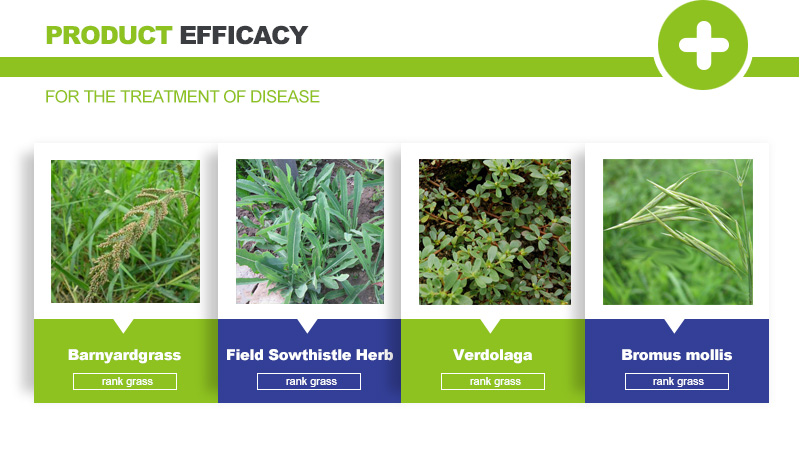
Note
If there is heavy rain or long-term rain, the new garlic will be affected, but it will recover after a period of time. The dosage of oxyfluorfen heribicide should be controlled flexibly according to the soil quality. The spray should be uniform and comprehensive in order to improve the effect of killing and weeding.
Common problems in use
Weeds do not disappear after application: This may be due to incorrect formulation or poor timing of application. Crop damage: Follow the instructions to the letter and avoid overdose.
Experts' suggestions
Rotation: To avoid weeds developing resistance, it is recommended to rotate the use of different types of herbicides. Environmental protection: Pay attention to environmental protection when applying herbicides and avoid polluting water sources.
Feedback from actual use
Many farmers and horticulturists feedback that oxyfluorfen is effective, weed control is obvious and crop growth is healthier.
Precautions
Uniform Application
To avoid phytotoxicity, it is crucial to apply Oxyfluorfen uniformly across the treated area. Uneven application can result in inadequate weed control and potential crop damage.
Avoiding Phytotoxicity in Soybean Fields
Oxyfluorfen should not be used in soybean fields after the emergence of soybean seedlings to prevent crop damage.
Environmental and Climatic Considerations
Apply Oxyfluorfen when the temperature is between 20-30°C and the soil temperature is above 15°C. Avoid application before heavy rainfall or during high wind conditions to minimize runoff and drift.
Minimizing Impact on Non-Target Plants
To protect non-target plants, do not apply Oxyfluorfen in areas where sensitive crops or plants are grown. Avoid contamination of water sources and adjacent vegetation.
Human and Environmental Safety
Oxyfluorfen is harmful to humans and the environment. Avoid contact with eyes and skin, and do not allow the herbicide to contaminate water sources. Empty containers should be crushed and buried away from water sources.
Safety and Toxicology
Acceptable Daily Intake (ADI)
The acceptable daily intake for Oxyfluorfen is 0.003 mg per kg of body weight per day.
Safety Intervals
The safety interval for Oxyfluorfen is 50 days, ensuring that crops treated with the herbicide are safe for consumption after this period.
Handling Precautions
When handling Oxyfluorfen, wear protective clothing, gloves, and eye protection. Avoid inhaling the spray mist and wash thoroughly after handling.
First Aid Measures
In case of contact with eyes or skin, rinse immediately with plenty of water and seek medical attention. If inhaled, move to fresh air and seek medical attention if symptoms persist.
Environmental Protection Guidelines
Avoid disposing of Oxyfluorfen near water sources. Clean spraying equipment away from water bodies and ensure that empty containers are disposed of properly to prevent environmental contamination. 